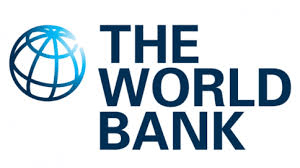Understanding Salvage Value in Financial Planning
Thus, despite the scrap value being a rough estimate, it must be done carefully. Salvage value is crucial because it is the book value or an estimated value of a specific asset after the depreciation has been completely expensed. In other words, it influences the final depreciable amount used by an organisation to determine its depreciation schedule. Assume that a company owns a piece of machinery that costs about Rs.15,000 and has a shelf life of approximately seven years. When a consumer leases a vehicle, the leasing company estimates the car’s residual value at the beginning of the lease. Suppose a car is leased with an original cost of $30,000, and the residual value is set at 50% after a three-year lease term, which is $15,000.
Salvage value and different depreciation methods
- Determining the salvage value of an asset accurately is crucial because it affects the depreciation expense that is recorded over the asset’s useful life.
- This means that the condition and age of the asset can greatly impact its salvage value.
- Explore how salvage value influences financial planning, affecting depreciation, financial statements, and investment decisions.
- The estimated remaining useful life of the asset is also important, which can be researched by looking at market examples of similar assets.
Often referred to as the scrap value or residual value, it plays a key role in determining the annual depreciation expense of an asset such as a car. Industry resources or professional appraisals can aid in determining an accurate estimate. Salvage value affects financial statements by influencing the calculation of depreciation expense, which is reported on the income statement. Accurately estimating salvage value ensures compliance with accounting standards and provides a true reflection of asset value over time. On the income statement, it affects depreciation expense, which impacts net profit.
For tax purposes, the depreciation is calculated in the US by assuming the scrap value as zero. This means that the computer will be used by Company A for 4 years and then sold afterward. The company also estimates that they would be able to sell the computer at a salvage value of $200 at the end of 4 years.
Declining balance method
Calculating the salvage value of an asset is a critical step in determining depreciation expenses for accounting purposes. From an accountant’s perspective, the salvage value is essential for preparing accurate financial statements. Tax professionals, on the other hand, may view salvage value as a key factor in tax planning strategies, as it can influence the timing and amount of depreciation deductions.
Determining the Salvage Value of an Asset
It is a critical factor in determining the depreciation of an asset, which is the reduction in the value of an asset over time. The determination of an asset’s salvage value is important in asset management for a variety of reasons. In the realm of accounting and finance, straight-line depreciation is a widely used method to allocate the cost of an asset over its useful life. One crucial aspect of straight-line depreciation is the determination of salvage value, which represents the estimated residual value of the asset at the end of its useful life.
It represents the amount that an owner can expect to receive from the sale or disposal of the asset at the end of its useful life. Discover how the FCFE equation is crucial for valuation, helping investors understand a company’s true financial health and potential. Unique assets may not have readily available market comparables, making it difficult to estimate their salvage value.
Salvage Value in Taxation and Accounting
On the cash flow statement, it impacts capital expenditure and tax calculations. In the realm of capital assets, determining the salvage value holds significant importance. It refers how to determine an assets salvage value to the estimated residual worth of an asset at the end of its useful life. The salvage value plays a crucial role in various financial calculations, such as depreciation, tax deductions, and asset valuation.
To calculate the salvage value, you’ll need the original price, depreciation percentage, and asset age. A change in a depreciable asset’s salvage value can have a significant impact on the amount of depreciation expense you can deduct. If the salvage value decreases, depreciation expense will increase, and vice versa. The IRS allows businesses to use the Accelerated Cost Recovery System (ACRS) or Modified Accelerated Cost Recovery System (MACRS) methods to determine the amount to be depreciated.
Estimating the potential market for such assets requires careful consideration. Companies need to consider potential economic scenarios and adjust their estimates accordingly. Inflation affects the real value of money and can impact the salvage value of assets. Currency fluctuations can also impact the salvage value of internationally traded assets. Changes in exchange rates can affect the value of assets in different currencies. Calculate the annual depreciation by subtracting the residual value from the PP&E purchase price and dividing that amount by the useful life assumption.
- The book value is the amount at which the asset is carried on the balance sheet.
- Both declining balance and DDB require a company to set an initial salvage value to determine the depreciable amount.
- Salvage value, also known as residual value, is the estimated amount that an asset is worth at the end of its useful life.
- By understanding common mistakes, businesses can ensure a more accurate and defensible depreciation schedule.
Residual value is a term sometimes used interchangeably with salvage value but may include additional estimated costs. Understanding these differences helps businesses plan better for asset disposal and financial reporting. Incorporating salvage value into risk management and financial planning enhances the precision of strategic decisions and ensures robust asset management. By accurately estimating salvage value, businesses can better plan for asset retirement, preventing financial shortfalls due to unexpected asset disposal costs. Remember that accurate salvage value estimation requires a holistic approach, considering both quantitative data and qualitative factors. Collaborate with experts, accountants, and industry professionals to make informed decisions.

















